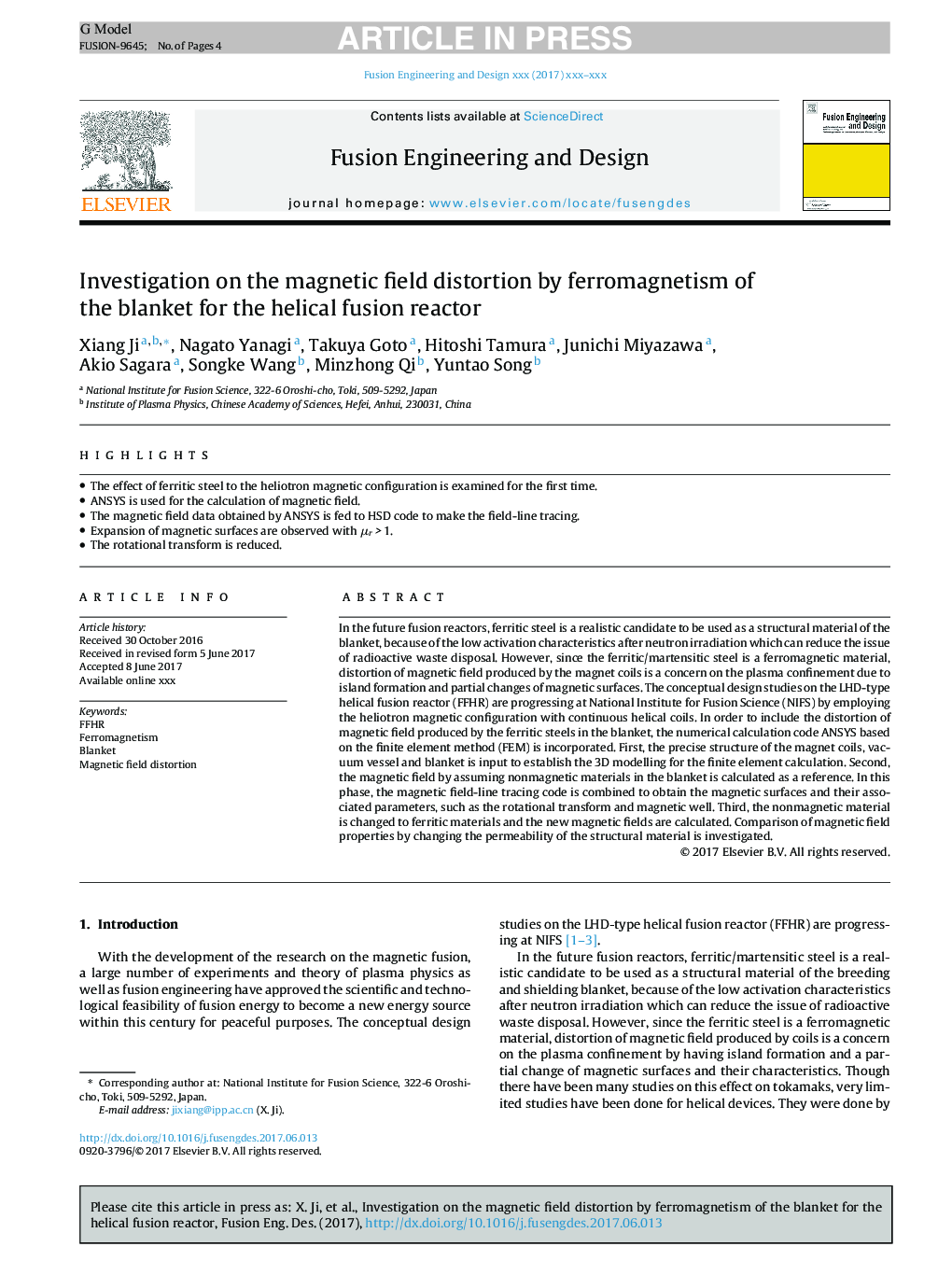| Article ID | Journal | Published Year | Pages | File Type |
|---|---|---|---|---|
| 6744633 | Fusion Engineering and Design | 2017 | 4 Pages |
Abstract
In the future fusion reactors, ferritic steel is a realistic candidate to be used as a structural material of the blanket, because of the low activation characteristics after neutron irradiation which can reduce the issue of radioactive waste disposal. However, since the ferritic/martensitic steel is a ferromagnetic material, distortion of magnetic field produced by the magnet coils is a concern on the plasma confinement due to island formation and partial changes of magnetic surfaces. The conceptual design studies on the LHD-type helical fusion reactor (FFHR) are progressing at National Institute for Fusion Science (NIFS) by employing the heliotron magnetic configuration with continuous helical coils. In order to include the distortion of magnetic field produced by the ferritic steels in the blanket, the numerical calculation code ANSYS based on the finite element method (FEM) is incorporated. First, the precise structure of the magnet coils, vacuum vessel and blanket is input to establish the 3D modelling for the finite element calculation. Second, the magnetic field by assuming nonmagnetic materials in the blanket is calculated as a reference. In this phase, the magnetic field-line tracing code is combined to obtain the magnetic surfaces and their associated parameters, such as the rotational transform and magnetic well. Third, the nonmagnetic material is changed to ferritic materials and the new magnetic fields are calculated. Comparison of magnetic field properties by changing the permeability of the structural material is investigated.
Keywords
Related Topics
Physical Sciences and Engineering
Energy
Energy Engineering and Power Technology
Authors
Xiang Ji, Nagato Yanagi, Takuya Goto, Hitoshi Tamura, Junichi Miyazawa, Akio Sagara, Songke Wang, Minzhong Qi, Yuntao Song,
